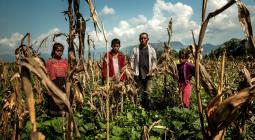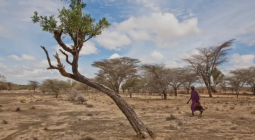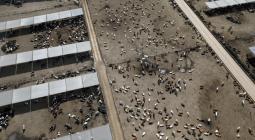‘Farmers are digging their own graves’: true cost of growing food in Spain’s arid south
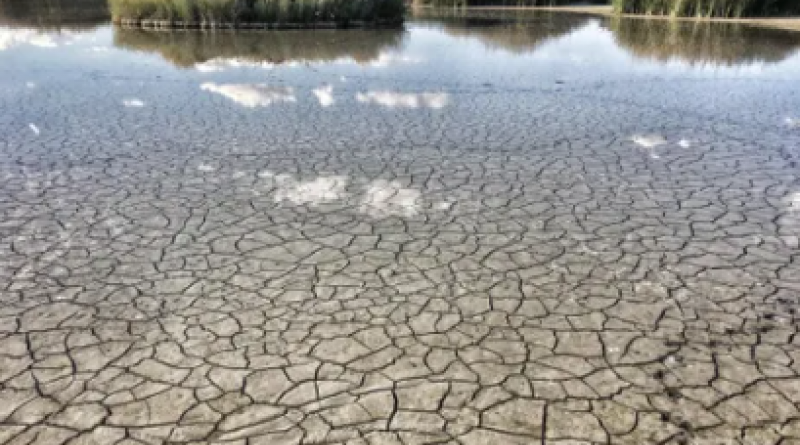
Intensive agriculture’s insatiable thirst for water is turning wetland to wasteland, draining rivers and polluting groundwater
Awetland without water is a melancholy sight. The fish are dead, the birds have flown and a lifeless silence hangs over the place. “Everything you see around you should be under water,” says Ecologists in Action’s Rafa Gosálvez from the lookout in Las Tablas de Daimiel national park. The park has been dry for three years and where there were once aquatic species such as ducks, herons, egrets and freshwater crayfish, as well as tree frogs and the European polecat, now the wildlife has mostly vanished.
Las Tablas de Daimiel is a unique wetland in the vast, almost treeless plains of Castilla-La Mancha in central Spain. But the park has had the life sucked out of it to slake intensive agriculture’s insatiable thirst.
Sixty-seven per cent of the water used in Spain goes to agriculture, according to the OECD, but this rises to as much as 85-90% in the south-east, says Julia Martínez-Fernández, technical director of the New Water Culture Foundation, which promotes the sustainable use of water.
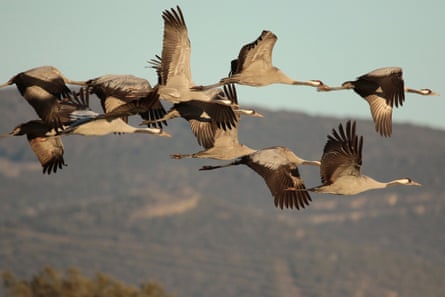
Las Tablas’ ecosystem relies on water from rainfall, the Guadiana river and a huge aquifer, but the climate crisis has resulted in Spain’s periods of drought getting longer. The Guadiana is drying up, while agriculture has depleted the aquifer and polluted the groundwater with phosphates and other chemical fertilisers. In 2009, the wetland was so dry that subterranean peat fires broke out.
The 3,000 hectares (7,400 acres) of Las Tablas are all that remain of what, according to the World Wildlife Fund, was once a system of 50,000 hectares of wetland in Castilla-La Mancha.
Gosálvez says the water needed to irrigate Castilla-La Mancha’s vines, olives, pistachios, onions and melons exceeds available resources and short of a run of several years of heavy rain, the wetland can only be saved by transferring water from the Tagus river – except the Tagus is overexploited and almost dried up four years ago.
Much of the problem dates from the 1970s, when the Spanish government embarked on a plan to turn Murcia and Almería in the south-east into Europe’s market garden. The plan had one major flaw: there was no water.
Spain’s south-east is arid and none of the country’s three major rivers flows near it. The Douro and Tagus both rise in north-central Spain and flow west into the Atlantic at, respectively, Porto and Lisbon, while the Ebro rises in the north-west and empties into the Mediterranean nearly 400km (250 miles) north of Murcia.
The solution was to transfer water from the headwaters of the Tagus through almost 300km of pipeline to irrigate the barren south.
However, rather than satisfy demand, the transfer has served to incentivise unsustainable intensive agriculture that has led to the exploitation of groundwater, with disastrous environmental consequences.
The spectacle this summer of thousands of dead fish floating in the Mar Menor, a saltwater lagoon in Murcia once known for its crystal-clear waters, was the result of fertiliser polluting the groundwater that drains into the sea. The nitrates trigger vast algae blooms that deprive the fish of oxygen.
“The Mar Menor disaster is the result of intensive agriculture which continues to expand in a manner that isn’t sustainable, both in Murcia and in many other parts of Spain,” says Martínez-Fernández.
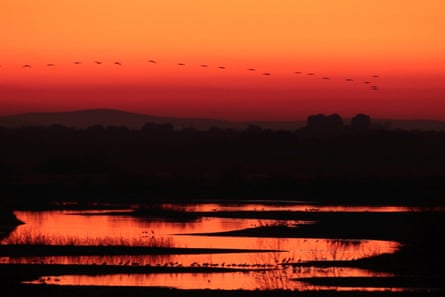
Neighbouring Almería – where the greenhouses making up the famous “sea of plastic” are visible from space – produces an estimated 3.5m tonnes of peppers, tomatoes, cucumber and melons a year. Together with Granada, it supplies about 50% of the European market. Every year Almería also produces thousands of tonnes of plastic waste, much of which ends up in the sea.
The Tagus water transfer is not enough to meet the growing demands of agriculture in Almería, however. Over the past 40 years the amount of water that reaches the Tagus headwaters has fallen by about 40% according to estimates, and is continuing to fall. So Almería is increasingly reliant on desalinated seawater for irrigation.
In an attempt to deal with the problem, in 1985 the Spanish government brought in a new water law to regulate its use. But it was forced to concede that anyone who had a well or access to water had the right to exploit it.
Today, the government recognises that the situation is unsustainable. Teresa Ribera, minister for ecological transition, is under pressure for Spain to conform to European standards on water quality and quantity that come into force in 2027, and knows this can only be achieved by reducing irrigation.
In presenting the country’s five-year water plan, Ribera recognised that water resources are in decline and parts of Spain face desertification.
“In this context, water plans can’t continue to support the sort of practices that have led to the overexploitation of aquifers, the contamination of groundwater and the deterioration of our rivers,” she said.
Although agriculture only accounts for about 3% of GDP and 4% of jobs, the farming industry has considerable political clout. When Ribera announced reductions in the amount of water that could be transferred from the Tagus, there was an outcry from farmers.
Lucas Jiménez, president of an association of farmers that depend on the transfer, warned Ribera “faces a battle in the courts and in the streets”.
“The problem is that the solution to the water issue will put any government in conflict with numerous sectors such as agriculture, hydroelectricity and property developers,” says Miguel Ángel Sánchez, a spokesperson for the Platform in Defence of the Tagus.
“Madrid knows this can’t go on, but they won’t take the bull by the horns and it’s the regional governments that have authority over water,” says Gosálvez.
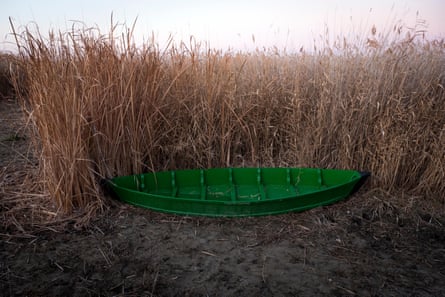
He says the EU’s common agriculture policy is partly to blame for encouraging intensive farming that is both environmentally damaging and wasteful, leading farmers to dump produce to maintain prices.
“The EU pays farmers to plant more, leading to overproduction with the result that the market price barely covers the cost of production,” he says.
“We need to wake up to reality, there is simply not enough water to meet the demand for irrigation. The farmers are digging their own graves.”
Find more age of extinction coverage here, and follow biodiversity reporters Phoebe Weston and Patrick Greenfield on Twitter for all the latest news and features
16 November 2021
The Guardian

